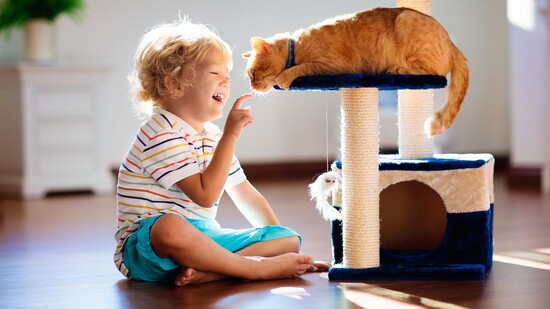What should parents consider when choosing a pet for their family?
Parents should consider their lifestyle -- are you an active family who loves to hike and be outside? Or are you looking for a companion that does not require a large amount of exercise (more low-energy)? A high-energy dog may sound fun, but if no one’s home to walk it, it’s not fair to the pet or the kids.
Other questions to consider before thinking about the pet:
- How much time do we have for daily care, training, exercise, and attention?
- What’s our living situation? (Apartment, house, fenced yard)
- Are there allergies or fears to consider?
- What’s our budget for food, veterinary care, grooming, etc.?
- How old are the children, and do you often have visitors?
Are there certain types of pets you recommend for families with young children?
Focus on the temperament of the pet, not just the breed. Look for a friendly, stable temperament, especially in a home with children. You could consider rescue pets with a known history of being good with kids -- there are a lot of shelters that allow meet-and-greets with the whole family. Again, it depends on the lifestyle of the parent and the temperament/personality of the companion in question.
What are some common misconceptions or mistakes you see families make when picking a pet for their kids?
Not necessarily when picking a pet, but when you actually have the pet, it is important to teach kids to respect pets and their boundaries. It is also important not to choose a pet just because of their breed (or trends), as every individual is different.
How can families find a good balance between a pet that’s fun for the kids and one that fits into their lifestyle?
That’s a great question, because choosing the right pet isn’t just about what’s cute or fun in the moment. It’s about creating a healthy, happy match between the family’s lifestyle and the pet’s needs, especially when kids are involved.
What are some of the developmental benefits you’ve seen when kids take part in pet care?
Young children can help feed or brush a calm dog or cat, learning how to respect their bodies and help to care for them. Teens may handle training or walking, learning how to handle a little more responsibility.
It is important to avoid pets that require constant supervision with kids, like some exotic animals or fragile small rodents. Or, alternatively, make sure that children are always supervised when with small/exotic animals.
Can pets help kids build emotional intelligence and empathy?
Yes, definitely! By teaching kids to respect all animals, you are teaching them how to recognize and understand their pet’s needs, which helps teach empathy.
What are some tips for introducing a new pet to a home with children?
Take it slow and don’t rush it -- some pets take a little while to adjust, and that is okay. You take it at their pace; rushing the process will likely not have the outcome you would like. Patience is key. For shelter/rescue dogs in particular, we use the 3/3/3 rule, meaning expecting at least 3 days to decompress, at least 3 days before learning a routine, and 3 months to fully acclimate to their environment. Do your research and prepare for the pet you are anticipating bringing into your home.
By teaching kids to respect all animals, you are teaching them how to recognize and understand their pet’s needs, which helps teach empathy.
Choosing the right pet isn’t just about what’s cute or fun in the moment. It’s about creating a healthy, happy match between the family’s lifestyle and the pet’s needs...
